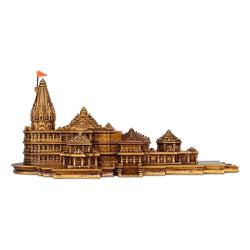Marble has been admired for centuries as a natural stone used in architecture, art, and design. Known for its elegance, durability, and timeless appeal, it is still widely used in flooring, sculptures, countertops, and décor. With growing emphasis on sustainability in construction and consumer products, marble’s environmental impact and long-term viability have come under closer evaluation.
Why Marble is Considered Sustainable
-
Natural & Non-Toxic: Unlike synthetic flooring or wall finishes, marble is a natural stone. It requires no harmful chemicals during its formation, making it one of the most environmentally friendly products available for interiors.
-
Longevity & Durability: A marble wall design or marble flooring in India can last for decades, reducing the need for replacements. This makes marble one of the best marble for home solutions in terms of sustainability.
-
Recyclability: Waste marble can be repurposed into marble wall panels, marble decorative items, or even marble handicrafts in Agra, keeping resources in use longer.
-
Thermal Properties: Marble’s ability to regulate indoor temperatures makes it an energy-efficient option for eco-friendly home decor.
Environmental Concerns
While marble is natural, it comes with challenges:
-
Quarrying Impact: Extraction uses large amounts of water and energy, contributing to environmental stress.
-
Transportation: Since best quality marble in India is often exported globally, shipping increases its carbon footprint.
-
Waste Slurry: Marble quarrying produces dust and slurry, which must be managed responsibly.
Sustainable practices such as recycled eco friendly products made from marble slurry are helping reduce this impact.
Marble in Sustainable Home & Decor Trends
Today’s conscious consumers want their homes to be stylish yet responsible. Marble fits beautifully into this balance:
-
Marble Wall Living Room: A natural alternative to synthetic wall panels, adding elegance while being eco-friendly.
-
Marble Temple for Home: Popular across India, especially white marble temple designs, these embody tradition with sustainability.
-
Marble Handicrafts Agra: Handmade marble gift items and marble mandirs support local artisans and preserve cultural heritage.
For those looking for eco-friendly gifts India, marble handicrafts and marble pooja mandirs are meaningful, long-lasting, and sustainable choices.
Marble vs. Other Materials
-
Marble vs. Engineered Tiles: Unlike ceramic tiles that often contain resins and chemicals, marble flooring in India is more natural and durable.
-
Marble vs. Wood: While wood may be renewable, it requires cutting down trees. Marble, on the other hand, offers durability without deforestation.
-
Marble vs. Plastic Decor: Plastic is cheap but harmful. Marble home decor items offer timeless beauty without adding to plastic waste.
Best Uses of Marble in Sustainable Living
-
Eco Friendly Home Decor India: From marble wall hangings to simple marble mandir designs, marble adds elegance and supports sustainable living.
-
Corporate & Festive Gifting: A marble handicraft item or eco friendly Diwali gifts in marble are unique, durable, and reflect responsible choices.
-
Interior Design: Types of marble flooring in India—Makrana, Sangmarmar, and others—remain popular for eco-conscious households.
Conclusion
Marble is not just about luxury—it’s about sustainable home accessories, eco friendly decoration ideas, and eco friendly gifts that last for generations. If responsibly sourced and used, marble stands as a bridge between tradition and sustainability. Whether it’s a white marble temple for home, marble wall art, or marble gift hampers, choosing marble means choosing elegance with responsibility.
Sustainably yours, since 1985.





